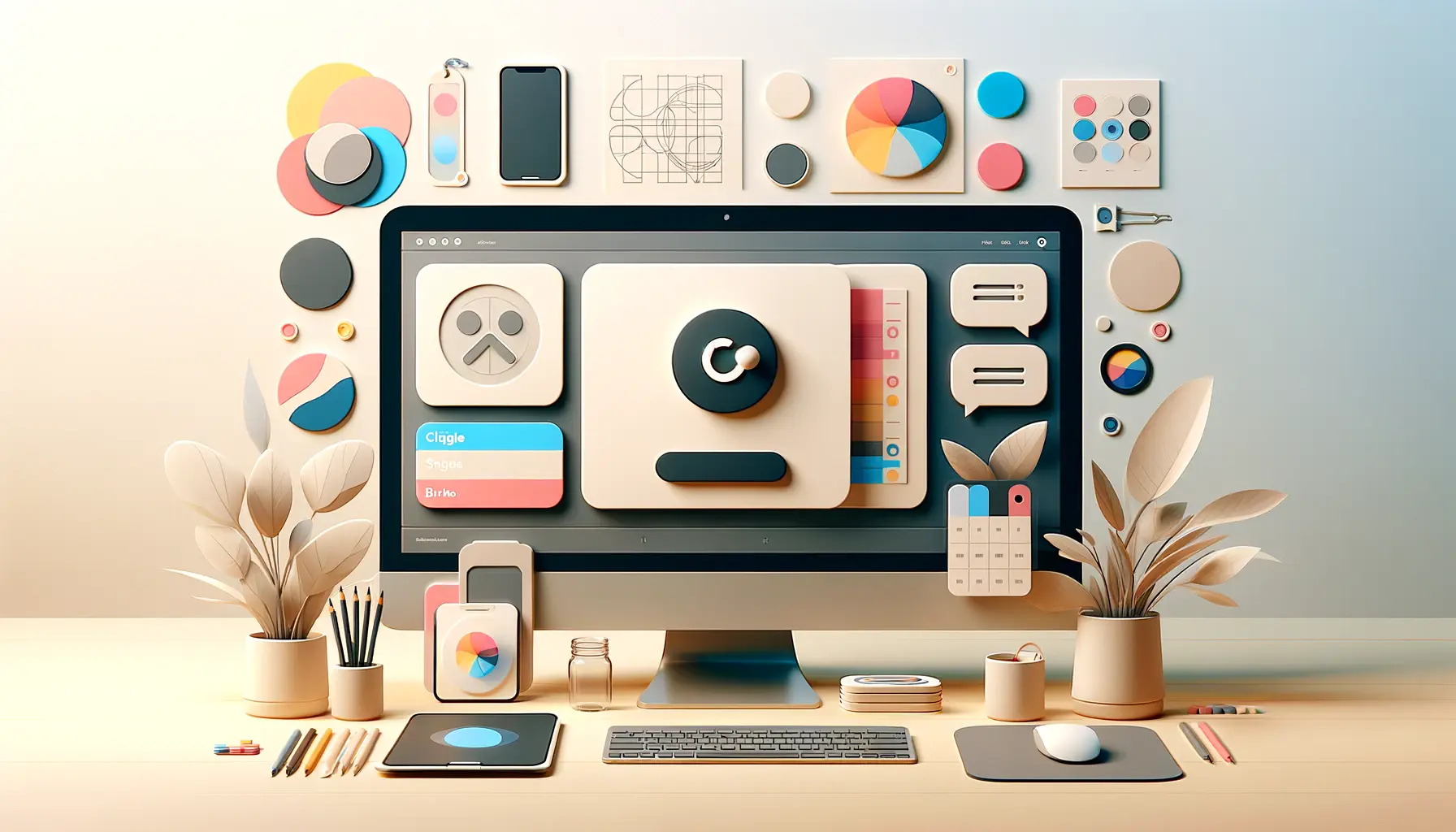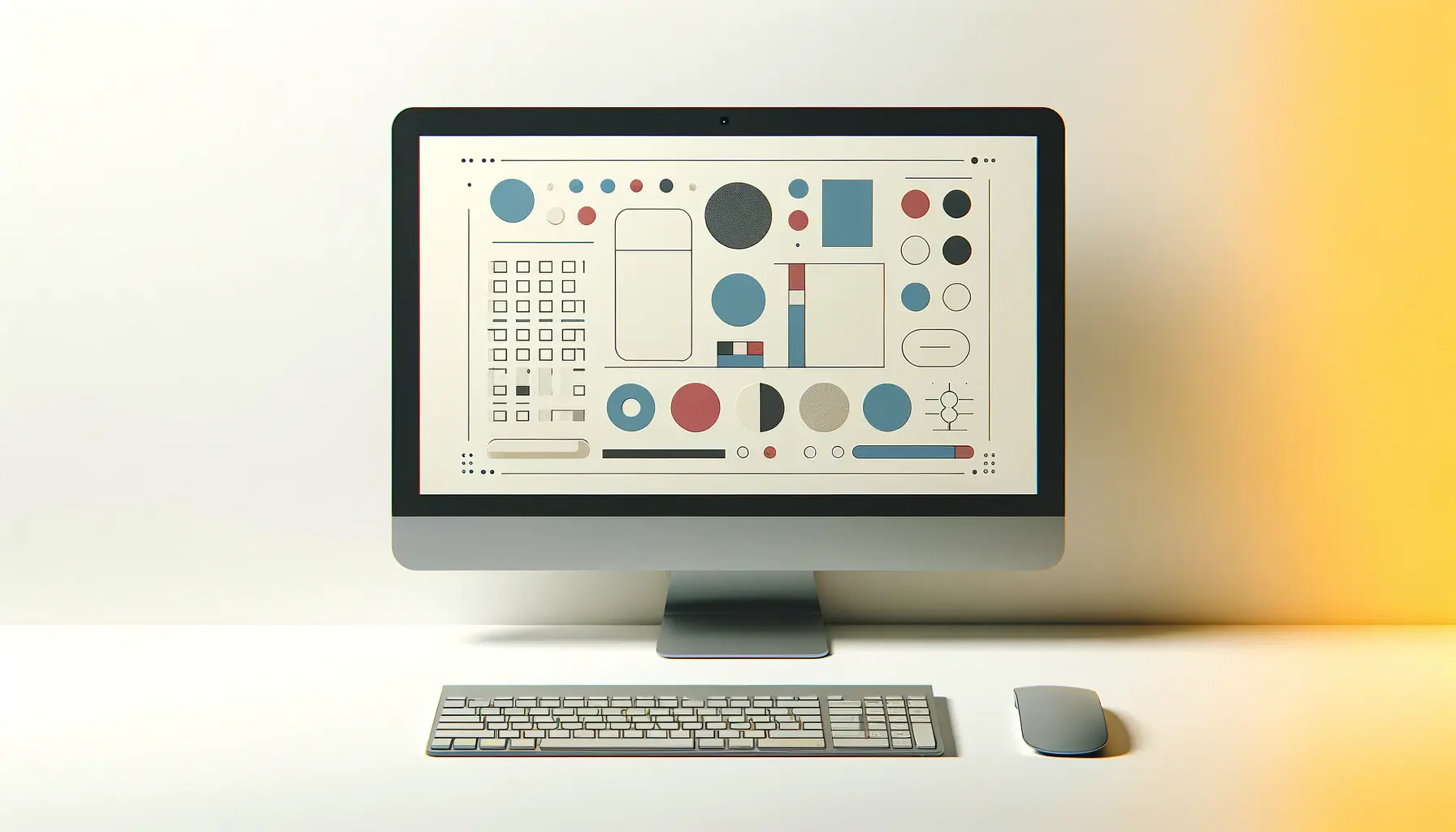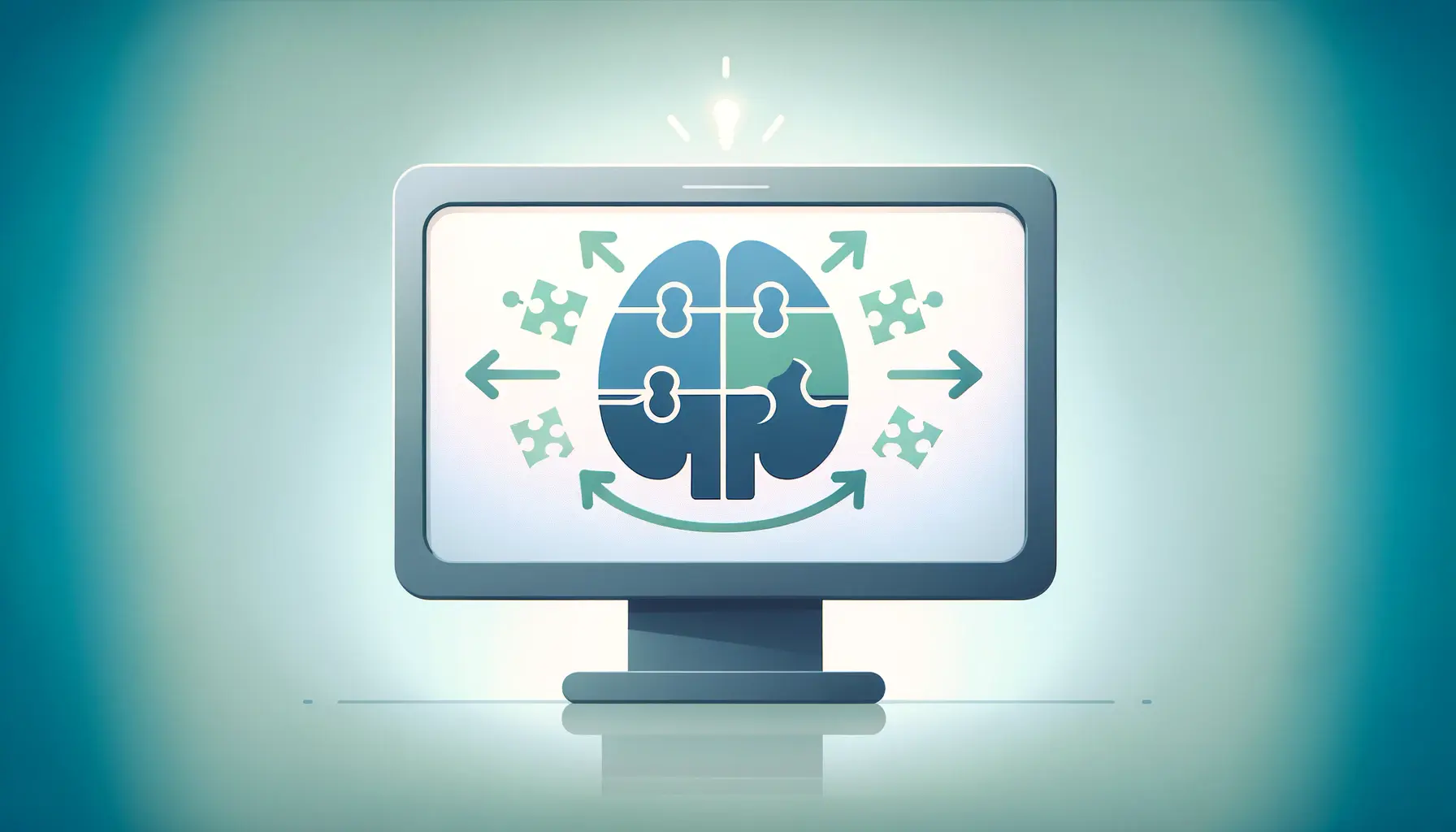Understanding the nuances of user experience is pivotal in crafting digital products that are not only accessible but also intuitive and efficient.
The process of testing with real users, particularly in the realm of accessibility, transcends traditional quality assurance metrics, embedding real-world interactions at the core of product development.
This approach ensures that digital platforms are not just usable but are genuinely tailored to meet the diverse needs of all users, including those who rely on assistive technologies.
Accessibility testing with real users is a critical step in identifying and dismantling the barriers that prevent people from fully engaging with digital content.
By involving individuals with a range of abilities in the testing process, developers can gain invaluable insights that automated testing tools may overlook.
This human-centric approach to testing highlights the importance of empathy and understanding in creating digital environments that are inclusive and welcoming to everyone.
- Understanding User-Centered Testing
- Strategies for Effective User Testing
- Challenges in Real User Testing
- Integrating User Feedback into Development
- Measuring the Impact of Changes
- Future Trends in User Testing
- Building a Culture of Continuous Improvement
- Embracing the Future of Accessibility Through Testing
- FAQs on Testing with Real Users
Understanding User-Centered Testing
User-centered testing is a methodology that places the end-user at the forefront of the product development process.
This approach not only seeks to uncover usability issues but also aims to understand the user’s behavior, preferences, and challenges when interacting with digital products.
By prioritizing real user feedback, developers can make informed decisions that enhance the usability and accessibility of their products.
Incorporating user-centered testing in the development cycle requires a strategic approach.
It involves selecting a diverse group of users, designing tests that cover a wide range of interactions, and analyzing feedback to implement practical improvements.
This iterative process ensures that products evolve in a direction that is increasingly aligned with the needs and expectations of real users.
Benefits of Real User Testing
The benefits of testing with real users are manifold.
Firstly, it allows developers to observe how people with different abilities interact with their products, providing insights that can lead to significant usability enhancements.
Secondly, real user testing can uncover issues that were not anticipated during the design phase, offering opportunities for innovation and refinement.
Moreover, engaging with real users fosters a deeper understanding of the accessibility challenges they face.
This empathy-driven approach not only enhances the product but also contributes to a more inclusive digital landscape.
By valuing the perspectives of all users, developers can create more equitable and accessible digital experiences.
Real user testing is essential for creating accessible and user-friendly digital products.
Strategies for Effective User Testing
Implementing effective user testing involves a series of strategic steps designed to maximize the quality of feedback and the impact of subsequent improvements.
These strategies ensure that testing is both efficient and comprehensive, covering a broad spectrum of user interactions and accessibility concerns.
To conduct meaningful user testing, it’s crucial to adopt a structured approach that encompasses the planning, execution, and analysis phases.
This ensures that the insights gained are actionable and directly contribute to enhancing the user experience.
Planning Your Testing Approach
Effective user testing begins with meticulous planning.
This phase involves defining the objectives of the testing, identifying the target user groups, and selecting the appropriate testing methods.
Planning also includes preparing the test environment and scenarios to ensure they reflect real-world usage as closely as possible.
- Define Testing Goals: Clearly articulate what you aim to achieve with the testing. Goals can range from improving navigation to ensuring content is accessible to users with visual impairments.
- Identify User Groups: Determine which user groups are most relevant to your product. This includes users with disabilities who can provide insights into accessibility issues.
- Select Testing Methods: Choose between various testing methods such as one-on-one sessions, remote usability testing, or A/B testing, depending on your goals and resources.
Executing the Testing Process
The execution phase is where the planning comes to life.
During this stage, real users interact with your product while you gather data on their experience.
This phase is critical for observing firsthand the challenges users face and identifying opportunities for improvement.
- Conduct the Tests: Carry out the tests according to the plan, ensuring that each participant is given clear instructions and that their interactions are accurately recorded.
- Observe and Record: Pay close attention to how users navigate the product, noting any difficulties or frustrations they encounter. Recording sessions can be invaluable for later analysis.
- Gather Feedback: After the testing session, collect feedback from participants through interviews or questionnaires. This feedback is crucial for understanding the user’s perspective.
By following these strategies, developers can ensure that their user testing efforts are both effective and insightful, leading to products that are more accessible and enjoyable for all users.
Incorporating structured user testing strategies is key to uncovering and addressing usability and accessibility issues.
Challenges in Real User Testing
While testing with real users is invaluable for enhancing accessibility and usability, it presents its own set of challenges.
These obstacles can range from logistical issues to interpreting the diverse feedback received from participants.
Understanding these challenges is crucial for planning and executing effective user testing sessions.
Addressing these challenges head-on with strategic planning and flexibility ensures that the testing process yields actionable insights, despite the hurdles that may arise.
Recruiting a Diverse User Group
One of the primary challenges in real user testing is recruiting a sufficiently diverse group of participants.
This diversity is crucial for obtaining a comprehensive understanding of how different users interact with a product.
However, reaching out to and engaging participants, especially those with specific disabilities, can be difficult and time-consuming.
- Strategies for Recruitment: Utilize social media, community groups, and organizations focused on disability advocacy to find participants. Offering incentives can also increase participation rates.
- Ensuring Representation: Make a concerted effort to include users from various demographics and with a range of disabilities to ensure the feedback is as inclusive as possible.
Interpreting Diverse Feedback
Another challenge is the interpretation of the feedback received.
Users with different backgrounds, experiences, and disabilities will have unique perspectives, which can sometimes lead to conflicting feedback.
Balancing these diverse viewpoints and determining which changes will benefit the most users can be complex.
- Analyze Feedback in Context: Consider each piece of feedback within the context of the user’s experience and needs. This helps in prioritizing issues that have the most significant impact on usability and accessibility.
- Look for Patterns: Identify common themes or issues raised by multiple users. These patterns can guide the development team on which areas to focus their improvement efforts.
Despite these challenges, the insights gained from real user testing are invaluable for creating more accessible and user-friendly products.
By anticipating and addressing these challenges, teams can ensure their testing efforts are both effective and inclusive.
Effective recruitment and analysis strategies are essential for overcoming the challenges of real user testing.
Integrating User Feedback into Development
Once user testing is complete and feedback has been collected, the next critical step is integrating this feedback into the development process.
This integration is essential for making meaningful improvements to the product’s usability and accessibility.
However, effectively incorporating user feedback requires a structured approach to ensure that changes align with user needs and enhance the overall user experience.
Understanding the importance of this step and executing it efficiently can significantly impact the success of a product in meeting the needs of its users, including those with disabilities.
Identifying Key Insights
The first step in integrating user feedback is to sift through the data collected during testing to identify key insights.
This involves analyzing feedback, observations, and any quantitative data to pinpoint areas that need improvement.
The goal is to understand the user’s experience deeply and identify both the strengths and weaknesses of the product as currently designed.
- Prioritize Feedback: Not all feedback will have the same level of impact on the user experience. Prioritize changes based on their potential to improve accessibility and usability.
- Identify Quick Wins: Look for feedback that can be acted upon quickly and easily for immediate improvements, alongside more significant, long-term changes.
Collaborative Review and Planning
Integrating user feedback into development is a collaborative effort that involves designers, developers, and other stakeholders.
This collaboration ensures that the insights gained from user testing are fully understood and effectively translated into actionable development tasks.
- Hold Review Sessions: Bring together the project team to discuss the feedback and insights. This fosters a shared understanding of user needs and how they can be addressed.
- Develop an Action Plan: Based on the review session, create a detailed action plan that outlines the specific changes to be made, who is responsible for each task, and the timeline for implementation.
By systematically identifying key insights and collaboratively planning how to implement changes, teams can ensure that user feedback directly informs the development process.
This approach not only improves the product’s accessibility and usability but also demonstrates a commitment to meeting the needs of all users.
Collaboration and structured planning are crucial for effectively integrating user feedback into product development.
Measuring the Impact of Changes
After integrating user feedback into the development process and making the necessary changes, it’s crucial to measure the impact of these adjustments on the product’s usability and accessibility.
This evaluation ensures that the modifications have effectively addressed the issues identified during user testing and have enhanced the overall user experience.
Measuring the impact of changes not only validates the efforts made but also guides future development priorities.
Implementing a systematic approach to assess the effectiveness of changes can provide clear insights into the improvements achieved and highlight areas that may require further refinement.
Utilizing User Feedback for Validation
Re-engaging with users who participated in the initial testing phase can offer direct insights into the effectiveness of the changes made.
Gathering feedback from these users on the updated product allows for a direct comparison of their experiences before and after the adjustments.
- Conduct Follow-Up Testing: Invite original participants for another round of testing to assess the new user experience with the changes implemented.
- Analyze Comparative Feedback: Compare the feedback from before and after the changes to identify clear improvements or areas that still need work.
Quantitative and Qualitative Metrics
Beyond user feedback, employing both quantitative and qualitative metrics can provide a comprehensive view of the impact of changes.
Quantitative data, such as usage statistics and error rates, can highlight improvements in efficiency and reduction in usability issues.
Qualitative insights, on the other hand, can shed light on user satisfaction and the overall user experience.
- Track Usage Metrics: Monitor how changes affect user engagement, task completion rates, and other relevant usage statistics.
- Gather Qualitative Insights: Use surveys, interviews, and usability studies to understand the user’s perspective on the changes and their impact on the user experience.
By measuring the impact of changes through both user feedback and a mix of quantitative and qualitative metrics, teams can validate the effectiveness of their efforts and identify further opportunities for improvement.
This ongoing process of evaluation and refinement is essential for developing products that are truly accessible and user-friendly.
Measuring the impact of changes is crucial for validating improvements and guiding future development efforts.
Future Trends in User Testing
The landscape of user testing is continually evolving, driven by technological advancements and a growing recognition of the importance of inclusivity in design.
As we look to the future, several key trends are poised to shape how user testing is conducted, making it more efficient, comprehensive, and reflective of diverse user needs.
Understanding these trends is crucial for organizations aiming to stay at the forefront of creating accessible and user-friendly products.
Adapting to these trends will require a proactive approach, ensuring that user testing methodologies remain effective in capturing the nuanced experiences of all users, including those with disabilities.
Automation and AI in User Testing
The integration of automation and artificial intelligence (AI) into user testing processes is set to increase efficiency and the breadth of issues that can be identified.
While real user testing remains irreplaceable for gaining deep insights into user experiences, AI can complement these efforts by quickly identifying patterns and predicting user behavior based on extensive data analysis.
- Automated Usability Testing: Tools that simulate user interactions can help identify basic usability issues before involving real users, allowing for a more focused testing phase.
- AI-Powered Analysis: AI algorithms can analyze user feedback and behavior on a large scale, highlighting common issues and areas for improvement that might not be immediately apparent.
Remote and Virtual Reality Testing
Advancements in remote testing and virtual reality (VR) technologies are making it easier to conduct user testing across geographical boundaries and in simulated environments.
This not only expands the pool of potential participants but also allows for testing in a wider range of contexts and scenarios.
- Remote Testing Platforms: These platforms facilitate user testing with participants from diverse backgrounds and locations, increasing the inclusivity and relevance of the feedback gathered.
- VR for Simulated Testing: VR technology can create immersive testing environments, enabling users to interact with products in a controlled yet realistic setting, offering valuable insights into user experiences in various contexts.
Embracing these future trends in user testing will enable organizations to enhance the effectiveness of their testing processes, ensuring that products are not only accessible but also aligned with the evolving expectations and needs of all users.
Staying ahead of future trends in user testing is essential for developing more inclusive and user-friendly products.
Building a Culture of Continuous Improvement
At the heart of successful user testing and product development lies a culture of continuous improvement.
This culture encourages ongoing evaluation, learning, and adaptation, ensuring that products not only meet current user needs but are also poised to evolve with changing demands and technologies.
Building and nurturing this culture within an organization can significantly enhance the effectiveness of user testing efforts and the overall quality of the products developed.
Creating a culture of continuous improvement involves more than just processes and methodologies; it requires a shift in mindset at all levels of the organization.
This shift prioritizes user feedback and data-driven decisions in the pursuit of excellence in usability and accessibility.
Encouraging Open Feedback and Collaboration
A key element of a continuous improvement culture is the encouragement of open feedback and collaboration among all stakeholders.
This openness ensures that insights from user testing are shared widely and that the development process is inclusive of diverse perspectives.
Such collaboration fosters innovation and helps identify opportunities for improvement that might otherwise be overlooked.
- Promote Cross-Functional Teams: Encourage teams from different disciplines to work together, sharing insights and challenges to foster a holistic approach to product development.
- Facilitate Regular Feedback Loops: Implement regular sessions for sharing feedback from user testing, allowing the team to discuss and plan improvements collaboratively.
Leveraging Data for Informed Decision Making
In a culture of continuous improvement, decisions are made based on data and insights rather than assumptions.
Leveraging data from user testing and other sources ensures that changes are grounded in real user needs and experiences.
This data-driven approach minimizes guesswork and maximizes the impact of improvements on usability and accessibility.
- Implement Analytics Tools: Use analytics tools to gather and analyze data on how users interact with the product, identifying areas for improvement.
- Set Measurable Goals: Define clear, measurable goals for each round of improvements, allowing the team to assess the impact of changes and guide future efforts.
By fostering a culture of continuous improvement, organizations can ensure that their products remain relevant, accessible, and highly usable over time.
This culture not only benefits users but also drives organizational growth and innovation, making it a critical component of successful product development.
A culture of continuous improvement is crucial for leveraging user testing to its fullest potential, ensuring products meet and exceed user expectations.
Embracing the Future of Accessibility Through Testing
The journey through understanding the importance of testing with real users in the realm of accessibility reveals a multifaceted approach to creating digital products that are not only functional but truly inclusive.
This exploration underscores the necessity of integrating real user feedback into every stage of product development, from conception through to refinement and beyond.
As we’ve navigated through the strategies, challenges, and future trends of user testing, it’s clear that the path to enhanced accessibility is both complex and rewarding.
Key Takeaways for a More Inclusive Digital World
In reflecting on the insights garnered, several key takeaways emerge.
First and foremost, the importance of engaging with a diverse group of users cannot be overstated.
This diversity enriches the testing process, ensuring that products cater to a broad spectrum of needs and preferences.
Moreover, the challenges inherent in user testing, from recruitment to interpreting feedback, highlight the need for a thoughtful and adaptive approach.
Overcoming these obstacles is essential for gleaning meaningful insights that can drive impactful changes.
- Adopting innovative technologies and methodologies, such as AI and remote testing, offers promising avenues for making user testing more efficient and far-reaching.
- Building a culture of continuous improvement within organizations is crucial for sustaining progress in accessibility. This culture fosters an environment where feedback is valued, and iterative enhancements are pursued relentlessly.
Forging Ahead with Accessibility at the Forefront
As digital landscapes continue to evolve, the imperative for accessibility becomes increasingly pronounced.
The insights derived from testing with real users illuminate the path forward, guiding developers and designers towards creating products that are not just usable, but genuinely accessible to everyone.
This commitment to accessibility is not merely a regulatory or ethical mandate but a cornerstone of innovative and user-centric design.
- Embrace the evolving trends in user testing to stay ahead of the curve in accessibility practices.
- Leverage the power of collaboration and data-driven decision-making to ensure that improvements are both meaningful and measurable.
In conclusion, the importance of testing with real users in enhancing accessibility cannot be understated.
It is a critical endeavor that demands attention, empathy, and a willingness to engage with the complexities of human experience.
By committing to this process, we can create digital products that not only meet the needs of the moment but also anticipate the demands of the future, fostering a more inclusive and accessible digital world for all.
Quality web design is key for a great website! Check out our service page to partner with an expert web design agency.
FAQs on Testing with Real Users
Explore common questions about the significance of involving real users in testing processes to enhance accessibility and usability.
Testing with real users uncovers real-world issues, offering insights that automated tests can’t, ensuring products meet diverse user needs effectively.
It provides direct feedback on user experience, reveals unforeseen issues, and helps tailor products to suit actual user behaviors and preferences.
By involving users with varying abilities, it identifies accessibility barriers, making digital products more inclusive and user-friendly.
Yes, by observing actual user interactions, it can predict behaviors and preferences, guiding more user-centric product development.
Recruiting a diverse user base and interpreting varied feedback are major challenges, requiring strategic planning and analysis.
It should be an ongoing process, integrated at multiple development stages to continuously refine and improve the product.
Real user testing captures emotional and subjective experiences, providing depth that automated testing cannot achieve.
Preparing involves defining clear objectives, selecting a representative user group, and creating realistic testing scenarios.












